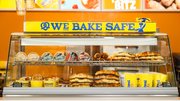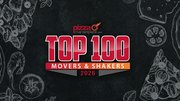Commentary
The restaurant labor solution staring us in the face: Older adults
Baby boomers — who some may now refer to as older adults in the 55- to 72-year-old age range — offer restaurant brands a solution to the industry's current hiring and retention conundrum. Plus, they come to jobs with more flexibility, customer engagement skills and even stronger levels of technological capabilities

September 19, 2018 by Matt MacInnis — Founder & CEO, Inkling
In the QSR sector, everyone is preoccupied with the problem of hiring and retention. And rightly so. Just look at these numbers:
- 146 percent limited service sector employee turnover rate.
- 3.9 percent September 2018 U.S. unemployment rate.
- 10 percent drop in 16- to 21-year-olds with jobs over decade.
And yet the funny thing is that a big potential problem-solver for this particular issue is staring the industry in the face: Baby boomers. That's right, remember those 55- to 72-year-olds? Data shows that many of these experienced workers are working longer than expected, with many of these so-called "older adults" seeking work to bridge the period between the ends of their professional careers and retirement. In fact, the Bureau of Labor Statistics reports that 97 percent of this age group is active in the job market.
"An international 2010 Cogito study found that older workers have more consistent and stable levels of productivity over time. The study attributed these findings to their wealth of experience, as well as stronger problem-solving skills, greater self-confidence and higher levels of motivation. "
The reasons they're staying in the labor pool are many, including modest savings, recession hang-over effects and longer life expectancies. Retiring takes a lot of money, in short, and as a result these pre- and sometimes partial-retirees represent a major part of the solution to the hiring problem among frontline workforces.
As it turns out, this population segment is the fastest growing restaurant workforce group. Likewise, relative to restaurant industry needs specifically, older adults tend to have more capabilities to handle flexible hours and many love to interact with people on the job. In short, restaurant employment roles help them and as clearly they can help restaurant brands with a constant need.
The elephant in the room: ageism
These discussions sometimes garner a bit of unmerited ageism. The evidence shows that hiring seasoned applicants over new workforce entrants has strong positives. A study by the National Council on Aging and McDonald's found that older workers offer low turnover rates, low absentee rates and are more interested in learning new tasks.
If you're wondering about productivity and performance, the data shows older workers beat their younger counterparts there, too. An international 2010 Cogito study found that older workers have more consistent and stable levels of productivity over time. The study attributed these findings to their wealth of experience, as well as stronger problem-solving skills, greater self-confidence, and higher levels of motivation.
The same study found that older workers can learn new technology skills if provided the opportunity. That assertion is even more true today as baby boomers have been adopting technology at a rapid rate. For instance, according to the Pew Research Center's 2018 analysis, 67 percent of baby boomers now own smartphones, up from 25 percent in 2011. And older adults technological adoption rates in other categories have also grown, with 52 percent now owning a tablet computer, and 57 percent using social media.
Technologically savvy + willing to learn
All of these insights dovetail nicely with modern retention strategies. At a time when mobile devices are ubiquitous in every workforce age group, it's logical to mimic consumer trends and match current learning behaviors. Let's face it: There's really only one place where it makes sense for your frontline team to train, and it isn't that stuffy, windowless back office. With mobile enablement, your frontline team trains shoulder-to-shoulder in the context of the kitchen.
With employees who can access training and reference materials on mobile devices at any time, you enable everyone to do their jobs under any circumstances. And when interactive micro-learning materials (bite-sized learning) are provided, restaurant brands benefit from 90 percent knowledge retention and 50 percent more engagement with the materials.
For anyone looking to uphold brand standards, guarantee consistent execution, and provide better guest experiences, this one is a no-brainer: Cast a wider net with your recruitment efforts and onboard every employee using mobile tech. It's just what your customers ordered.
Photo by iStock
About Matt MacInnis
Matt is the Founder and CEO of Inkling. His vision for the future of how people communicate drives Inkling’s strategy, product development and culture. He leads Inkling to make the world a smarter place. Prior to founding Inkling, Matt spent eight years at Apple, growing the use of its products in education and the sciences. He holds a Electrical and Computer Engineering degree from Harvard University









